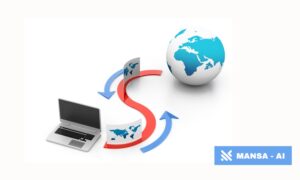In Edge computing, two key players have emerged to redefine the way businesses operate: the Internet of Things (IoT) and Artificial Intelligence (AI). The intersection of these technologies holds immense potential, but it also presents challenges that traditional computing infrastructures struggle to address. This is where Edge Computing steps in, offering a powerful solution to meet the demands of IoT and AI seamlessly.
Understanding the Challenges: IoT and AI Integration
The Internet of Things has ushered in an era where devices, from smart thermostats to industrial sensors, are interconnected, generating massive volumes of data. On the other hand, Artificial Intelligence relies on vast datasets to learn and make informed decisions. While the synergy between IoT and AI is promising, the sheer volume and speed of data transmission pose challenges for centralized cloud computing.
- Latency Issues
One of the primary challenges is latency. Traditional cloud computing involves sending data to a centralized server for processing, which can result in delays. In scenarios where split-second decision-making is crucial, such as autonomous vehicles or industrial automation, latency is a critical issue that needs to be addressed.
- Bandwidth Constraints
The sheer volume of data generated by IoT devices can strain network bandwidth. Transmitting all this data to a centralized cloud for analysis is not only time-consuming but can also be cost-prohibitive. Bandwidth constraints become a bottleneck in the seamless integration of IoT and AI applications.
Enter Edge Computing: A Solution Tailored for IoT and AI Integration
It addresses the challenges posed by centralized cloud computing by bringing computation and data storage closer to the source of the data – the “edge” of the network. This paradigm shift has transformative implications for businesses looking to harness the full potential of IoT and AI.
- Reduced Latency
It significantly reduces latency by processing data locally. Instead of sending every piece of data to a centralized server, IoT devices can perform initial processing at the edge, enabling faster response times. This is crucial for applications where real-time decision-making is imperative.
- Bandwidth Optimization
By processing data locally, Edge Computing minimizes the need for transmitting large volumes of data to the cloud. Only relevant, processed data is sent to the central server, optimizing bandwidth usage and reducing the associated costs.
- Enhanced Security
It also enhances security by keeping sensitive data closer to its source. Transmitting sensitive information to a remote cloud server poses security risks. With Edge Computing, data can be processed and analyzed locally, reducing the likelihood of data breaches during transmission.
Real-world Applications: The Edge in Action
- Smart Cities
In the realm of IoT, smart cities are a prime example of Edge Computing in action. Intelligent traffic management systems, environmental monitoring, and public safety applications leverage Edge Computing to process data locally. This ensures swift response times for real-time decision-making, contributing to the efficiency and safety of urban spaces.
- Industrial IoT
Edge Computing is revolutionizing industrial processes by enabling real-time monitoring and control. In manufacturing, for instance, Edge Computing allows for instant analysis of sensor data on the factory floor. This not only enhances efficiency but also facilitates predictive maintenance, reducing downtime and costs.
- Healthcare
In the healthcare sector, where both IoT and AI play pivotal roles, Edge Computing is instrumental. Wearable devices and medical sensors can process and analyze patient data locally, providing timely insights to healthcare professionals. This not only improves patient care but also ensures data privacy and security.
The Future of Business: Leveraging Edge Computing for Success
For businesses looking to stay ahead in the era of IoT and AI, embracing Edge Computing is not just an option; it’s a necessity. Here’s how businesses can leverage Edge Computing to their advantage:
- Faster Decision-Making
Edge Computing empowers businesses to make faster decisions by processing data at the source. This is particularly beneficial in scenarios where split-second decisions can impact operational efficiency, safety, or customer satisfaction.
- Cost Optimization
By reducing the need for extensive data transmission to the cloud, businesses can optimize their bandwidth usage and reduce associated costs. This is particularly relevant for organizations dealing with large-scale IoT deployments.
- Scalability and Flexibility
Edge Computing offers scalability and flexibility, allowing businesses to adapt to changing demands. Whether it’s scaling up to accommodate a growing number of IoT devices or adjusting processing capabilities based on fluctuating workloads, Edge Computing provides the agility needed in dynamic business environments.
- Enhanced Security and Privacy
With data processed locally, businesses can enhance the security and privacy of sensitive information. This is crucial in industries where compliance with data protection regulations is paramount.
Conclusion
As the synergy between IoT and AI continues to drive innovation across industries, businesses must adopt Edge Computing to unlock their full potential. The ability to process data at the edge not only addresses the challenges posed by traditional computing but also opens new avenues for efficiency, cost savings, and innovation. In a world where connectivity and speed are paramount, businesses that leverage Edge Computing will find themselves at the forefront of progress, ready to meet the demands of IoT and AI head-on. The future is undoubtedly connected, intelligent, and at the edge of technological possibilities. Are you ready to take your business there?



































